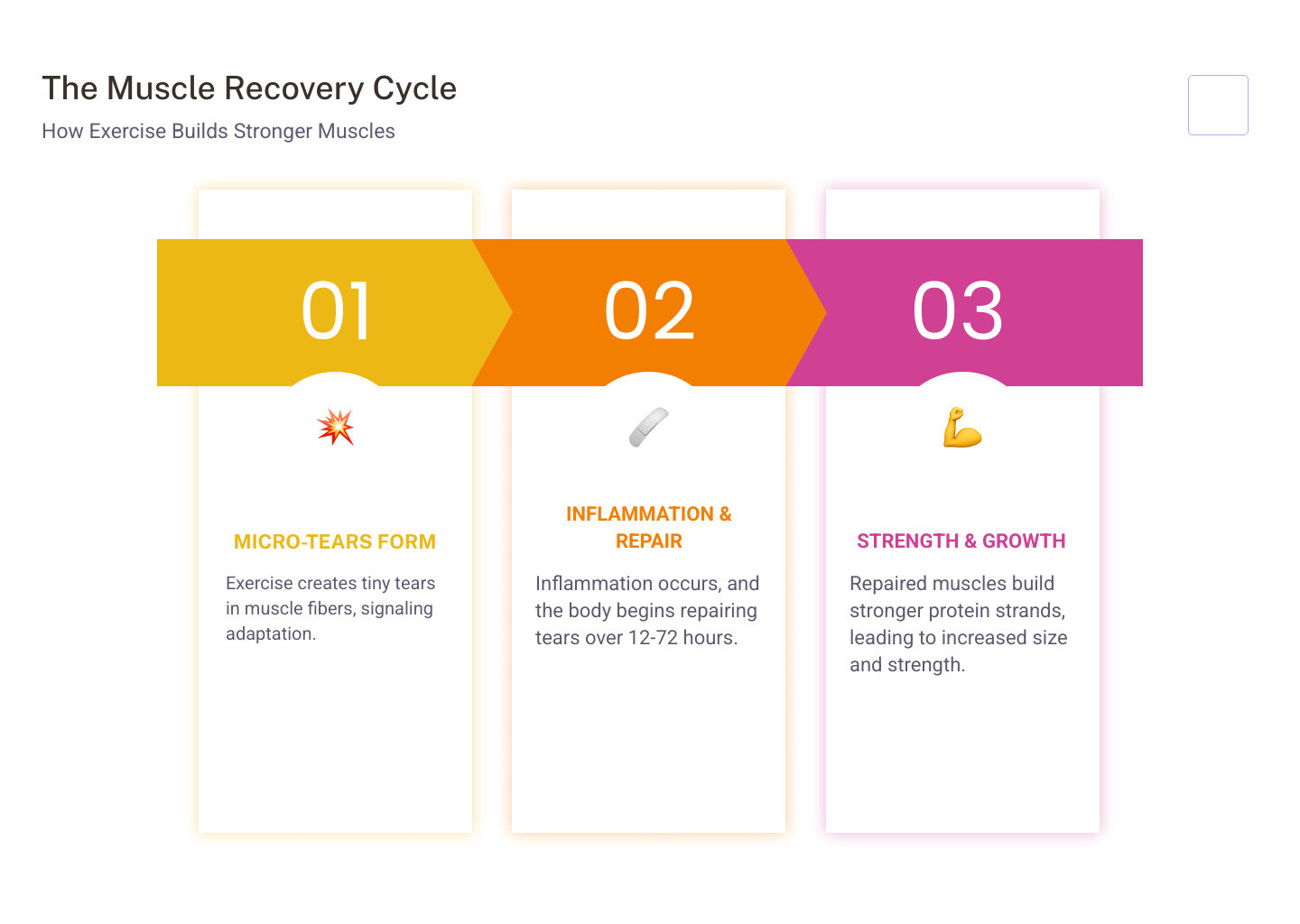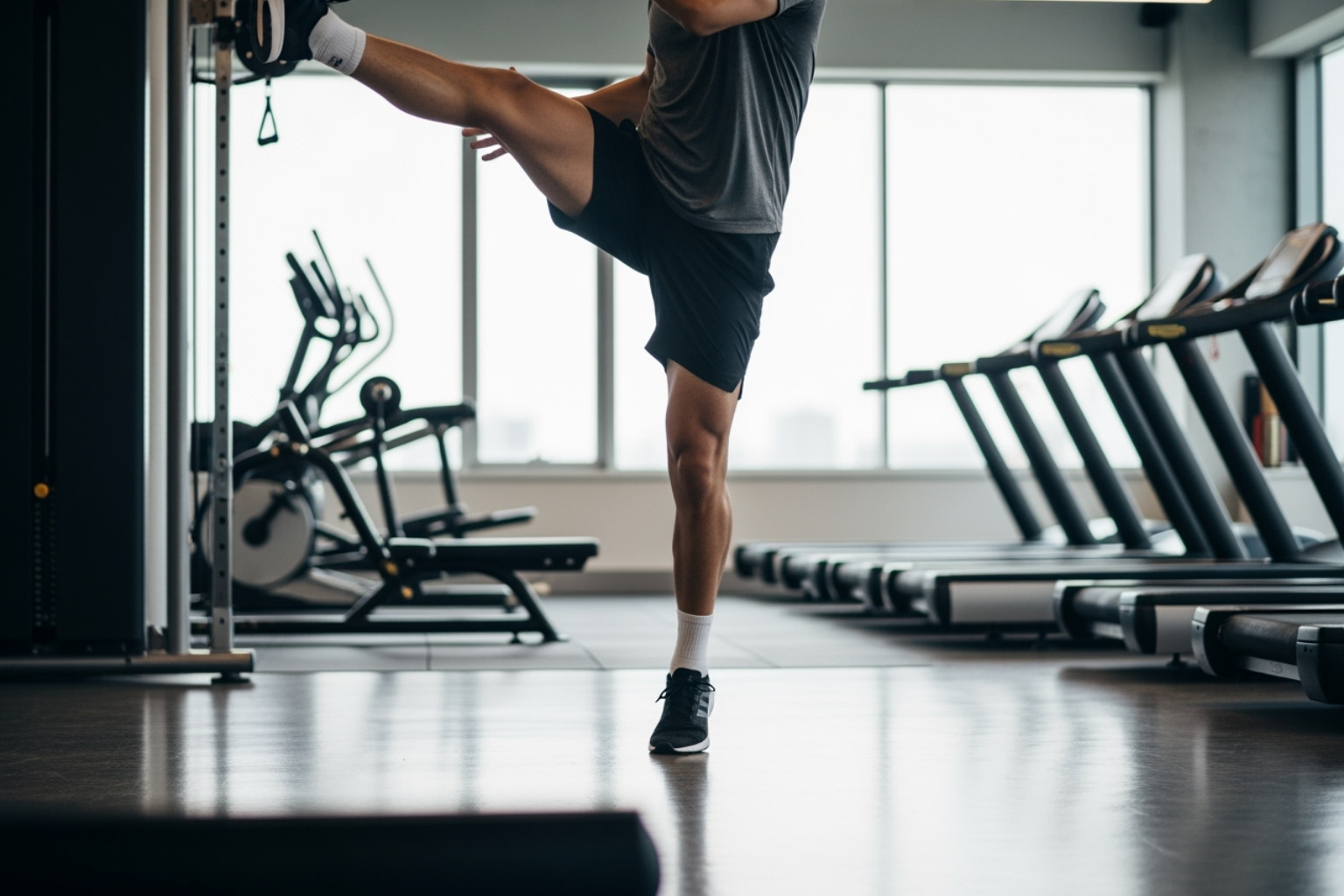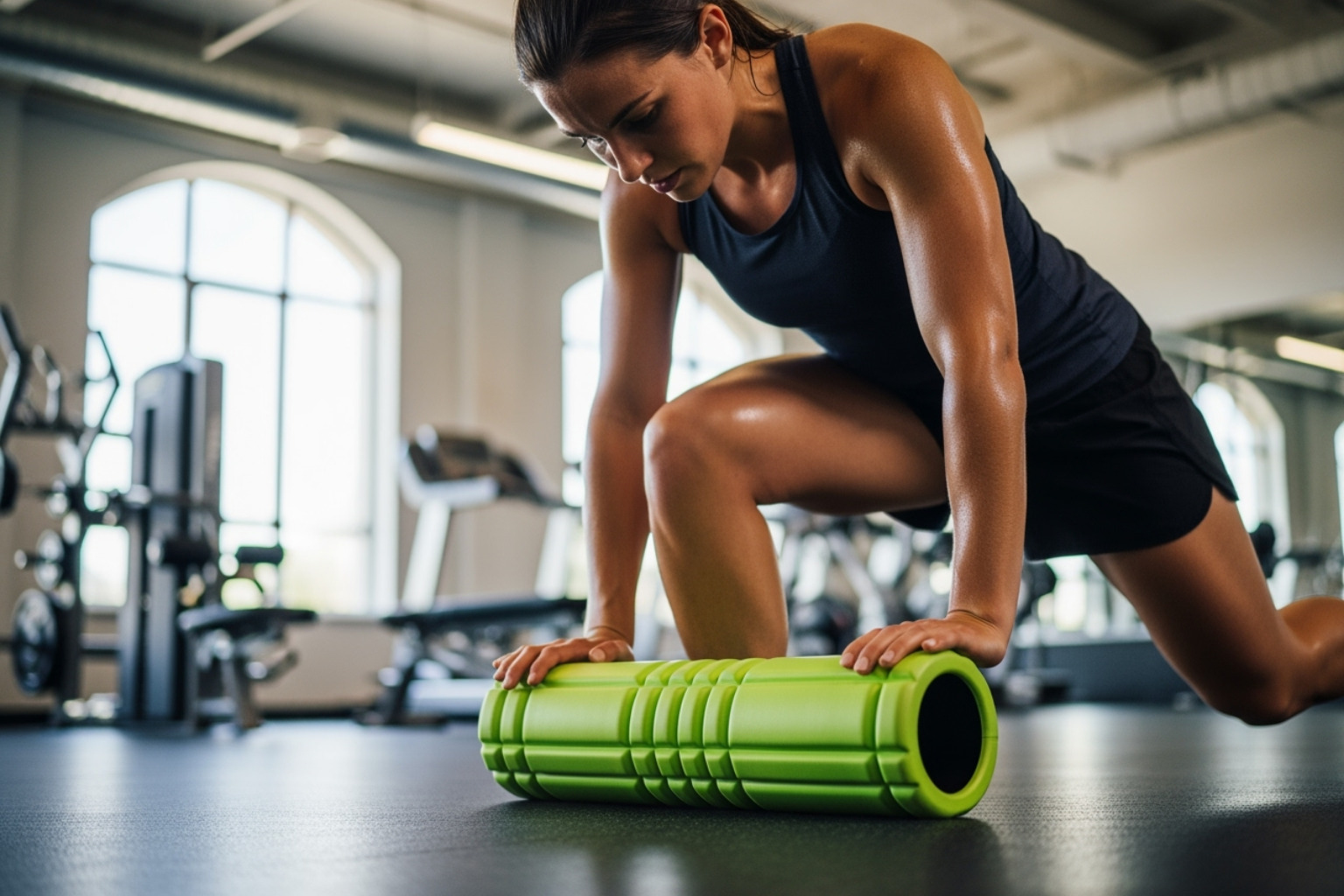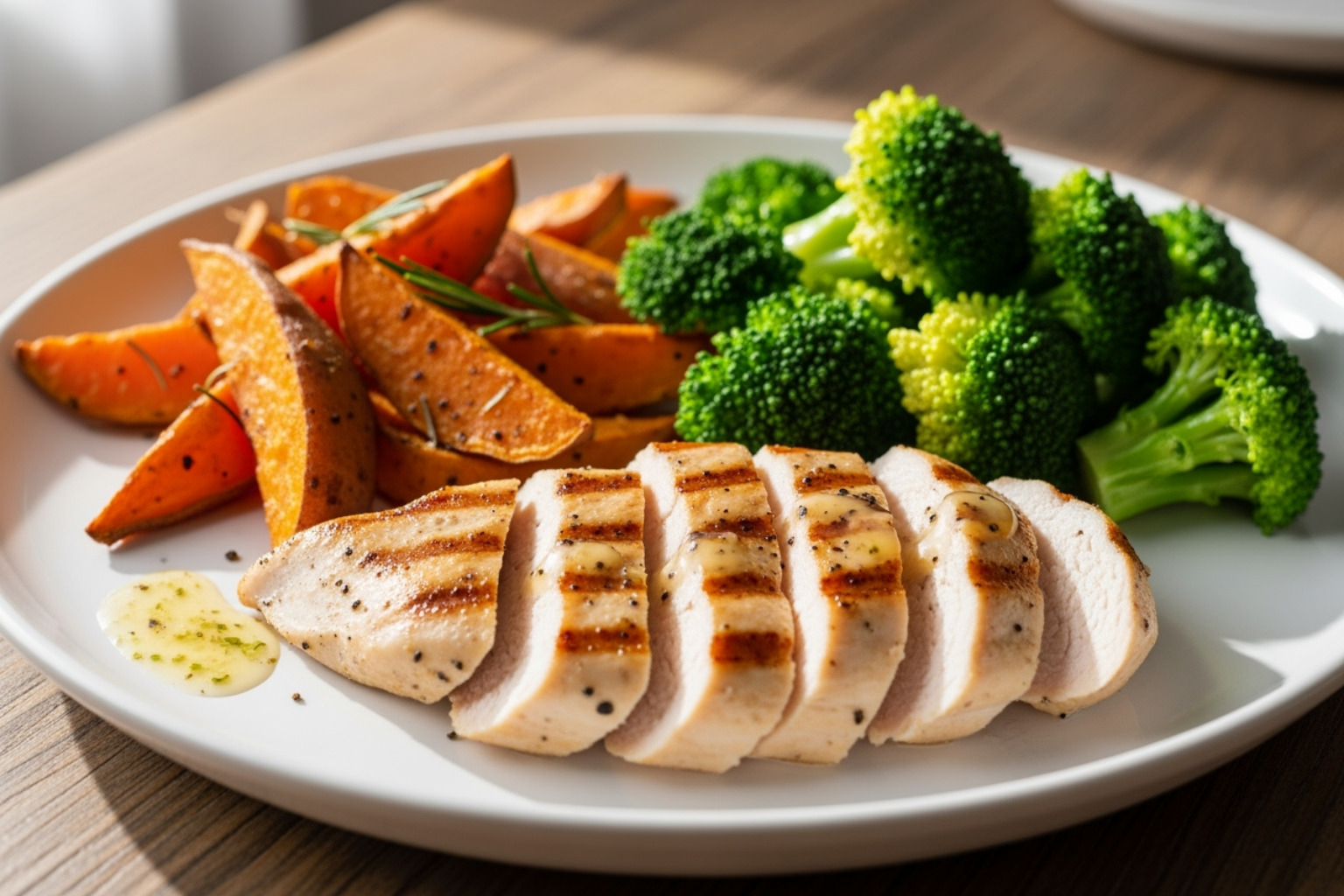Why Your Muscles Hurt After Exercise (And What Actually Works)
How to help sore muscles is a top question for anyone active. That post-workout ache, known as Delayed Onset Muscle Soreness (DOMS), is a normal sign your muscles are adapting and getting stronger. It typically peaks 24-72 hours after exercise and fades within a few days.
Effective relief involves a combination of smart recovery strategies:
- Hydration and Nutrition: Drink plenty of water and eat protein-rich, anti-inflammatory foods.
- Movement and Rest: Engage in light activity like walking to boost circulation, and get 7-9 hours of quality sleep for muscle repair.
- Temperature and Massage: Use cold therapy initially for inflammation, followed by heat to relax muscles. Self-massage can also release tension.
- Targeted Relief: Apply a natural topical cream for fast-acting, localized relief without oral medications.
While DOMS is normal, sharp pain, significant swelling, or pain that worsens with movement are red flags for injury. I'm Tony Enrico, creator of Neuropasil. My research has shown that the best way to manage muscle pain is by combining these recovery habits with topical solutions that support your body's natural healing process.

Quick look at how to help sore muscles:
Understanding Muscle Soreness: Why You Ache After Exercise
That next-day ache after a tough workout is your body's response to a challenge. When you push your muscles, especially with eccentric contractions (like lowering a weight), you create tiny, beneficial micro-tears in the muscle fibers. Research shows these movements are key to building strength.
Your body responds with a temporary inflammation response, sending healing compounds to the area. This causes the familiar tightness and tenderness, but it's also a muscle growth signal—your body is rebuilding the muscle stronger than before. So, when you're wondering how to help sore muscles, the soreness itself is a sign of progress.
Acute Soreness vs. Delayed-Onset Muscle Soreness (DOMS)
It's important to know the difference between the two types of soreness.
Acute soreness is the immediate burning you feel during exercise from muscle fatigue. It's not caused by lactic acid, a common lactic acid myth, and it fades quickly after you stop.
Delayed-Onset Muscle Soreness (DOMS) is the ache that appears 12 to 24 hours later. The DOMS timeline usually involves a 12-72 hour peak of discomfort. This delayed response is a normal adaptation process as your muscles repair and rebuild, according to the American College of Sports Medicine.pdf).
How Long Does Muscle Soreness Last?
The good news is that DOMS is temporary, typically lasting 2-5 days. The intensity factor—how new or hard the workout was—plays a big role. Your fitness level, age, and recovery habits also influence the duration.
When to be concerned: Normal DOMS is a dull, widespread ache. If you experience sharp pain, pain near a joint, significant swelling, or discomfort that lasts over a week, it's time to see a healthcare professional. This could be an injury, not just soreness. For more details, see our guide on after workout soreness.
Proactive Prevention: Warm-Ups, Cool-Downs, and Progression

The best way to manage muscle soreness is to be proactive. A little preparation and smart, gradual progression can significantly reduce post-workout discomfort. The key is listening to your body and respecting its limits to prevent both soreness and injury.
The Power of a Proper Warm-Up
A warm-up prepares your muscles for action by increasing blood flow and making them more pliable. The most effective method is dynamic stretching—active movements that mimic your workout, like leg swings or arm circles. A study on warm-ups confirmed that this can help reduce muscle soreness. Just 5-10 minutes is all it takes to prepare your body, improve your form, and lower your risk of injury.
The Role of a Cool-Down
A cool-down helps your body transition back to a resting state. An active cool-down, like walking after a run, allows your heart rate to decrease gradually and prevents blood from pooling in your limbs. Afterward, static stretching (holding a stretch) is excellent for improving long-term flexibility, even if its direct effect on soreness is debated. Think of it as a crucial step for better recovery and muscle health. For more strategies, check out our guide on reducing muscle soreness after a workout.
How to Help Sore Muscles: Active Recovery and Hands-On Methods

Once soreness sets in, you don't have to just wait it out. Hands-on methods can ease discomfort and speed up recovery by boosting circulation and releasing tension.
Gentle Movement and Active Recovery
It may seem counterintuitive, but when you're wondering how to help sore muscles, gentle movement is often the answer. Active recovery—like a light walk, swim, or gentle yoga—increases blood circulation, which helps flush out waste products and deliver oxygen for repair. This is often more effective than complete rest. Learn more about relieving muscle aches with physical activity.
Massage and Self-Myofascial Release
Massage is a powerful tool for immediate relief. Research shows it can reduce inflammation and promote cellular repair. For at-home care, self-myofascial release with tools like foam rollers or massage guns is highly effective. These devices allow you to apply targeted pressure to increase blood flow and reduce tenderness. A review on self-massage benefits confirms that these methods are effective in preventing and reducing DOMS. Start gently and focus on tight spots for therapeutic relief. For more on the Benefits of Massage, see what experts say.
Using Temperature: Heat and Cold Therapy
Knowing whether to use ice or heat is key.
- Cold therapy is best for the first 24-48 hours. Ice packs or cooling topicals constrict blood vessels, which reduces inflammation and numbs pain.
- Heat therapy is ideal after 48 hours. Warm baths or heating pads increase blood flow, helping muscles relax and easing stiffness.
Some people find alternating between hot and cold (contrast therapy) offers the best of both worlds.
Fueling Your Recovery: The Role of Nutrition and Sleep

What you put into your body and how much you rest are just as important as what you do at the gym. Proper nutrition and sleep provide the essential building blocks and time for muscle repair.
How to Help Sore Muscles with Hydration and Nutrition
Hydration and nutrition are non-negotiable for recovery.
- Hydration: Water is crucial for transporting nutrients and flushing out metabolic waste that contributes to soreness. Stay hydrated before, during, and after your workouts.
- Nutrition: The combination of protein and carbohydrates after a workout is key. Protein provides amino acids to rebuild muscle, while carbs replenish energy stores. A position paper on nutrient timing suggests this is optimal for recovery.
- Anti-inflammatory Foods: Foods rich in antioxidants, like cherries, blueberries, ginger, and turmeric, can naturally combat the inflammation that causes soreness.
The Critical Role of Sleep in Muscle Repair
Sleep is one of the most powerful recovery tools. During deep sleep, your body ramps up protein synthesis and releases human growth hormone (HGH), both of which are essential for repairing damaged muscle tissue. Skimping on sleep can slow recovery and stall your progress. Aim for seven to nine hours of quality sleep per night, as recommended by research on sleep and athletic performance. If you're dealing with persistent body aches, improving your sleep is a great place to start.
When Soreness Is a Red Flag (And What to Do)

While most muscle soreness is a sign of progress, it's crucial to recognize when pain signals a real injury. Pushing through an injury can lead to long-term setbacks.
How to Help Sore Muscles vs. Treating an Injury
Knowing the difference between DOMS and an injury is key.
- DOMS (Soreness): A generalized, dull ache across a muscle that improves with gentle movement.
- Injury: Sharp, sudden, or localized pain, especially near a joint. It's often accompanied by swelling, bruising, or redness, and pain gets worse with activity.
If you suspect an injury, use the RICE method (Rest, Ice, Compression, Elevation). The Cleveland Clinic advises seeing a doctor if pain is severe, lasts more than a week, or doesn't improve. For more on different types of muscle pain, see our guide.
A Note on Pain Meds (NSAIDs)
Reaching for an oral pain reliever like an NSAID might seem like an easy fix, but it's not always the best choice for routine soreness. The inflammation these drugs block is a vital part of the muscle repair and strengthening process. In fact, research in Acta Physiologica suggests that high doses of anti-inflammatory drugs might compromise muscle growth.
This is why natural, topical alternatives like Neuropasil are a smarter approach. A topical cream delivers targeted relief with ingredients like Menthol to cool and soothe the area, without interfering with your body's systemic healing process. You get to manage the discomfort while allowing your muscles to complete their natural repair cycle.
Frequently Asked Questions about Relieving Sore Muscles
Here are quick answers to the most common questions about managing muscle soreness.
Should you work out with sore muscles?
Yes, but stick to light activity. This is called active recovery, and it can help speed up the healing process by increasing blood flow. A gentle walk, swim, or yoga session is beneficial. However, avoid intense exercise on the same sore muscle group. Always listen to your body; if you feel sharp pain, rest the area completely. The Cleveland Clinic advises that light activity is generally safe for typical soreness.
How is muscle soreness different from a strain or sprain?
The difference is in the type and onset of pain.
- Muscle Soreness (DOMS): A generalized, dull ache that appears 12-72 hours after a workout and improves with gentle movement.
- Strain or Sprain: An acute injury causing sharp, localized pain, often with immediate swelling, bruising, and loss of function.
If your symptoms point to a strain or sprain, use the RICE method and consider seeing a doctor. Learn more about recognizing different types of muscle pain.
Can topical creams help with muscle soreness?
Yes, absolutely. Topical treatments like Neuropasil offer targeted relief right where you need it, avoiding the systemic side effects of oral medications. Our formula uses menthol to create a cooling sensation that distracts nerves from pain signals. As the Cleveland Clinic explains, this approach is effective for localized muscle pain. It allows you to manage discomfort without hindering the natural inflammation and repair process your muscles need to get stronger.
Conclusion: A Holistic Approach to Muscle Recovery
Understanding how to help sore muscles is about embracing a holistic approach. That post-workout ache is a sign of progress, your body rebuilding itself stronger. While you can't eliminate it, you can make recovery smoother.
Consistency is your secret weapon. A proper warm-up and cool-down, good hydration and nutrition, and quality sleep are the foundations of sustainable fitness. It's also vital to listen to your body and distinguish between the productive ache of DOMS and the sharp warning of an injury.
For those times when you need fast, targeted relief, natural topical solutions offer a smarter path. Instead of using oral NSAIDs that can interfere with muscle growth, a quality cream like Neuropasil delivers soothing comfort directly to the source. Its blend of Aloe, Urea, and Menthol works with your body's healing process, not against it.
Take small, consistent steps to support your recovery. And when you need a helping hand, reach for a solution that helps you get back to doing what you love, faster.
Ready to experience targeted, natural relief? Find the best muscle pain cream for your recovery.
References / Sources
When writing about muscle recovery and pain relief, we believe in backing up our advice with solid science. Throughout this article, we've drawn on research from trusted medical institutions, peer-reviewed journals, and health organizations to ensure you're getting accurate, evidence-based information on how to help sore muscles.
The American College of Sports Medicine has been an invaluable resource, particularly their detailed information sheet on Delayed Onset Muscle Soreness (DOMS).pdf), which helped us explain why our muscles ache after exercise. Their research on eccentric exercise and joint injury provided crucial insights into how different types of contractions affect our muscles.
For understanding the mechanics of muscle micro-tears and inflammation, we turned to Frontiers in Physiology, specifically their comprehensive review on eccentric muscle contractions and their risks and benefits. This same journal also published an important systematic review on post-exercise stretching that helped us understand when stretching does and doesn't help with recovery.
The Cleveland Clinic has been an excellent source for practical health information, and we've referenced their expert articles on the benefits of massage, whether you should workout when sore, and how topical pain relief works.
When it comes to nutrition and recovery, the Academy of Nutrition and Dietetics provided valuable guidance on eating for strength and recovery after sports injury. The Journal of the International Society of Sports Nutrition offered detailed research on nutrient timing, helping us understand when to eat protein and carbohydrates for optimal recovery.
For our section on massage and self-myofascial release, we relied on a thorough systematic review published in the International Journal of Sports Physical Therapy examining foam rolling benefits. The Hospital for Special Surgery provided practical guidance on using massage guns safely, while the National Center for Biotechnology Information published important research on massage effects on DOMS.
Our recommendations about warm-ups are based on a randomized controlled trial published in the Australian Journal of Physiotherapy that specifically examined how warm-ups reduce delayed onset muscle soreness.
The cautionary notes about NSAIDs come from compelling research published in Acta Physiologica, which found that high doses of anti-inflammatory drugs can compromise muscle strength and growth in young adults—important information for anyone serious about their fitness progress.
Finally, for our discussion on sleep's critical role in recovery, we drew on a comprehensive review from ResearchGate examining sleep and athletic performance.
All of these sources have helped us create a comprehensive, trustworthy guide on how to help sore muscles that combines cutting-edge research with practical wisdom. We're committed to providing you with information you can trust as you steer your fitness journey and recovery process.














